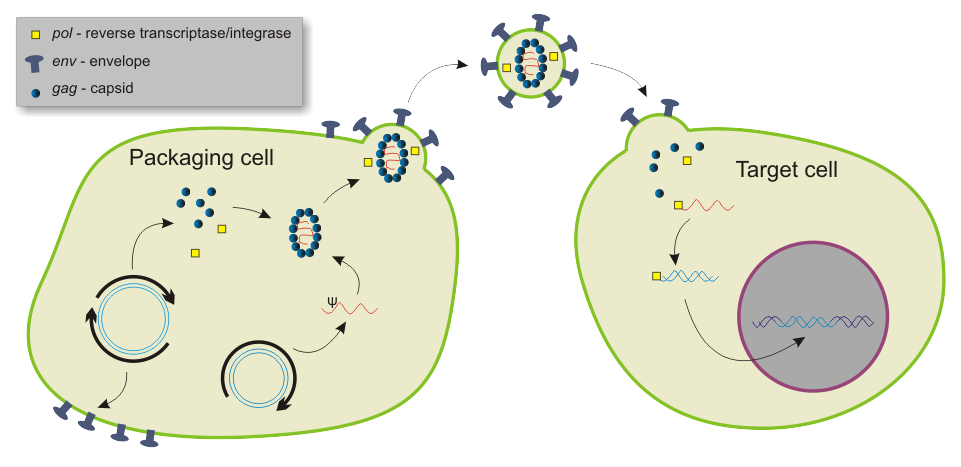Adenoviral/Retroviral Hybrid Vector Construction
Inquiry NowGene therapy utilizes the delivery of DNA into cells, which can be accomplished by several methods. Adenoviral (Ad) vectors have become attractive gene transfer vectors because of their wide host range, strong infectivity and high purity. However, it is not integrated into the host genome, so gene expression is short, which requires repeated administration. Although retroviral (RV) vectors of type C can be stably integrated into the genome of host cells, this characteristic is limited by their inability to infect non-isolated cells, relatively low titer and smaller packaging capacity. At present, Creative Biolabs has proposed a new method to combine the advantages of high titer and infectivity of Ad vector with the comprehensive characteristics of RV vector in order to establish long-term sustained expression.
Ad/RV Hybrid Vector for Gene Therapy
In the practical application of human gene therapy, one of the most important obstacles is the lack of a single vector system capable of effectively transmitting and stably integrating therapeutic genes in vivo. Viral vectors are often used in gene therapy. The ultimate goal of viral vectors is to treat various diseases in the fields of neurology, neurodegeneration, metabolic diseases and cancer. A combination of Ad vector and RV vector has been developed to transfer marker genes to target cells. The most common method is to use mouse leukemia virus (MLV)-based replication-competent retrovirus (RCR) as a vector to construct a hybrid by introducing a long terminal repeat of MLV (two loxP recognition sites on both sides) into an Ad vector. Thus, MLV structural genes (gag, pol and env) are introduced into cultured cells. This vector and method can transplant new production cells into patients for continuous gene transfer. Therefore, the system produces a vector that combines two attractive features of adenovirus and retrovirus, and is suitable for a variety of clinical gene therapy applications, such as experimental human gene therapy.
 Figure 1. Vectors in gene therapy.1
Figure 1. Vectors in gene therapy.1
Our Services for Ad/RV Hybrid Vector Development
RCR vector based on MLV mediates effective, selective and persistent tumor transduction, and has significant therapeutic effects in various cancer models. In order to further improve the efficiency of this strategy, relying on the world-class expertise in virus vector technology, Creative Biolabs developed a method of transmitting adenovirus by encoding RCR vector (AdRCR). Therefore, tumor cells transduced by Ad vector instantly become cells producing RCR vector. As expected, compared with the original RCR vector itself, the high titer of AdRCR obtained significantly higher initial transduction levels in human cancer cells in vitro and in vivo. In a pre-established in vivo tumor model, compared with a single RCR, it can not only accelerate the proliferation of subsequent vectors and the progressive transduction of tumors, but also improve the efficacy of gene therapy with high titer AdRCR precursor drug activator in a dose-dependent manner.
Features of Ad/RV Hybrid Vector Construction Service
- There are many types of cells that can be infected, and the host range is wide
- High infection efficiency, especially suitable for plasmid vector transfection efficiency of low cells, such as primary cultured cells, nerve cells, and the level of exogenous gene expression is high
- Packing exogenous gene fragments are large
- It is easy to prepare a large number of viruses with high titer
- High biosafety
In addition to the existing carriers, Creative Biolabs also has the ability to provide customized one-stop vector design and construction services for our clients according to different experimental needs. If you want to know more information, please contact us.
Reference
- From Wikipedia: Peter Znamenskiy, CC0 1.0, https://commons.wikimedia.org/wiki/File:Lentiviral_vector.png.
